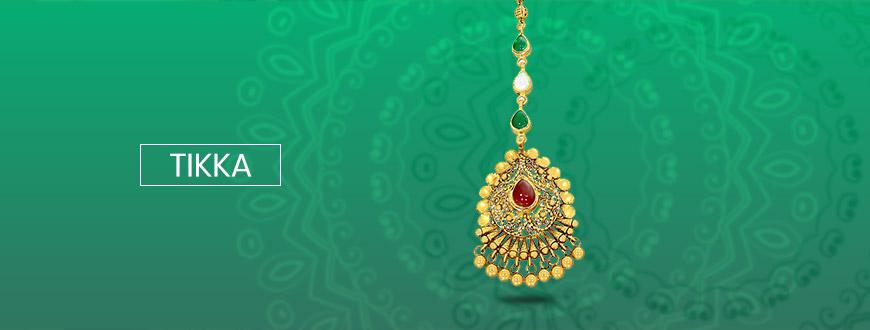Kalyan Wiki

Tikka
A Tikka is any traditional ornament worn by women on their forehead in South Asia. In India, it is called Maangtikka since the word “Maang” is the Hindi word representing the partition of hair on the forehead. Covers the region between the two eyebrows and above the bridge of the nose; the brow chakra or the sixth chakra - the sight of the soul as indicated in Hindu mythology.
The Maangtikka is the third among 16 adornments called “Solah Shringaar” worn by a lady during her marriage; the other 15 being bindi, sindoor, Anjana or kajal, Nath or nose ornament, haar or necklace, Karn Phool or ear ornaments or earrings, Mehendi, choodiyan or bangles, bajuband or armlet, aarsi & haath phool , Keshapasharachana or hair accessory, Kamar band or waist accessory, Payal & bichuas, itar or scent and the bridal dress or shaadi ka joda. It symbolises the makeover that occurs in the life of a woman l as she embraces the blissfulness of a married woman and is known to protect her from any evil eyes. It most prominently emphasises the union with her husband and the start of their new journey together. It also signifies commitment between the couple as it covers the sixth chakra, the site which controls the intensity of feelings.
It is a small piece of jewellery with a drop pendant attached to the hairline. The culture of each state is reflected in the design part of Maangtikas, the preferred tikka of Rajasthanis being Borla style named after the round shape of the jujube fruit, studded with gems and stones and suspended from a single string. Muslims go for the jhoomar or Passa maang tikka which has a draping element towards the left side of the forehead.
South Indian designs have three strands of tikkas, one laid down along the central partition of the hair, while the other two are extended toward both ears. Two brooches are also embedded in the hair to symbolise the blessings of the sun and moon for the bride.
In Punjabi design, the draping part of the Maangtika is comparatively more substantial, is studded with stones and covers the front part of the forehead till the bridge of the nose and is best suited for a Punjabi dress.Marathi and Gujarati brides have Maangtikkas with pearls which are called Mundavalya and Moriyo respectively.
The Maangtikka has many advantages over other ornaments worn by ladies. It need not be restricted to marriage functions and can be worn to other celebrations or gatherings as well. It suits middle-aged women too and can be paired with traditional or modern attire alike.







